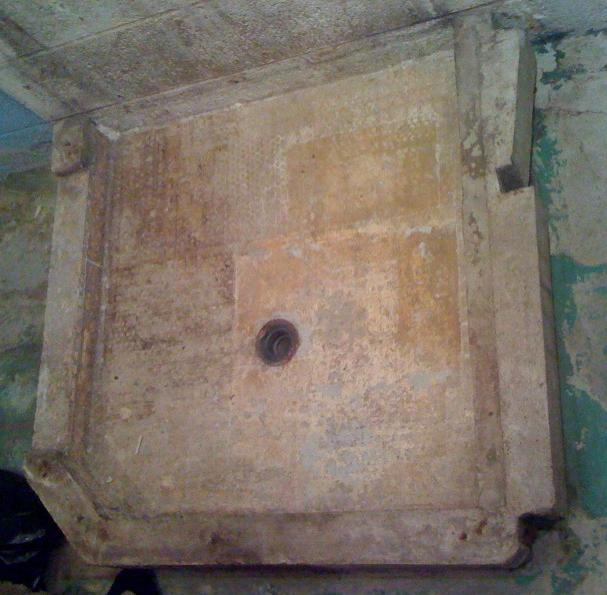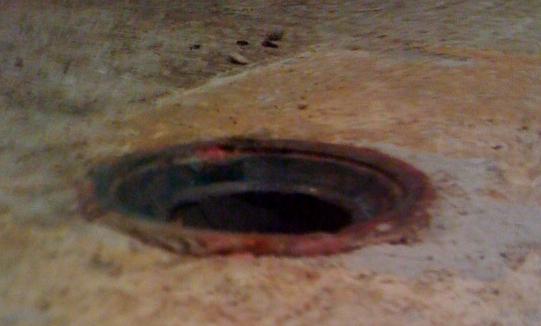I wonder if anyone can help me with a little advice. I am doing a charity job for a family member. They are a elderly couple who are on a fixed income (Social security). They just moved into the basement unit of another family members home and found that the shower unit is leaking, creating mold and mildew in the wall and was going to become a major health issue. So the unit was ripped out completely and any mold or mildew was removed. The entire area has been scrubbed down with vinegar, as well as hydrogen peroxide to make sure there is no remaining mold or mildew. I have even went as far as to use a Air free Air Sterilizers running it for a week in the space to make sure that the air is free of any contaminants.
So the shower and bathroom have been gutter, and I will be remolding it. Now I have done sinks, walls, drywall, concrete and so on in the past so I'm not a newbie but I sure am not a bathroom expert. Had these persons not been in need I never would have taken on this job and instead suggested they higher professionals, but this is not a option and health was a concern.
So my long winded scenario leads me to my question, the shower drain. I have never done a basement shower so I'm just looking for some insight. The shower that was there was a "custom" shower. A concrete pan, with tile and some wood walls with some very simply sheets of what appeared to be plastic or vinyl glued against the wood caulked together. Needless to say there was a good amount of moisture that was leaking into the wood. This shower was probably built by the original builder in the 1950's as a extra and not meant to be used that much.
So everything has been gutted with the exception of the concert base / pan. In the pan is the waist drain, which again is all pretty standard. What I am looking to do is break out the pan, remove it completely. Then replace it all with a one or four piece prefab shower unit like Aqua Glass or Sterling. I think this kind of unit will be much better in the basement, since they interlock and don't allow for leaks causing more mold or mildew. Measurement wise everything jives up for the space. I am not looking to move the drain at all, it centers up perfect with how the bathroom remold will go but I do need to break it out of the concrete. So with that being said, what do I do here with the pre existing waist drain? How do I remove this? Is there some sort of trick to unscrew or release this or should I just hammer out the concrete? Do I need to remove this? After I get it out, do I cut it and re glue a new drain in its place? I am trying to make this as easy as possible for them so I can get in and do the job but this is my only hang up. Please take a look at the pictures and let me know if you have any insight or tips or ideas here. Again had this not been a charity job I would have suggested they higher on some pros but that's just not in the cards so its being left to me to remedy.
Thank you in advance for your help!
Mike
So the shower and bathroom have been gutter, and I will be remolding it. Now I have done sinks, walls, drywall, concrete and so on in the past so I'm not a newbie but I sure am not a bathroom expert. Had these persons not been in need I never would have taken on this job and instead suggested they higher professionals, but this is not a option and health was a concern.
So my long winded scenario leads me to my question, the shower drain. I have never done a basement shower so I'm just looking for some insight. The shower that was there was a "custom" shower. A concrete pan, with tile and some wood walls with some very simply sheets of what appeared to be plastic or vinyl glued against the wood caulked together. Needless to say there was a good amount of moisture that was leaking into the wood. This shower was probably built by the original builder in the 1950's as a extra and not meant to be used that much.
So everything has been gutted with the exception of the concert base / pan. In the pan is the waist drain, which again is all pretty standard. What I am looking to do is break out the pan, remove it completely. Then replace it all with a one or four piece prefab shower unit like Aqua Glass or Sterling. I think this kind of unit will be much better in the basement, since they interlock and don't allow for leaks causing more mold or mildew. Measurement wise everything jives up for the space. I am not looking to move the drain at all, it centers up perfect with how the bathroom remold will go but I do need to break it out of the concrete. So with that being said, what do I do here with the pre existing waist drain? How do I remove this? Is there some sort of trick to unscrew or release this or should I just hammer out the concrete? Do I need to remove this? After I get it out, do I cut it and re glue a new drain in its place? I am trying to make this as easy as possible for them so I can get in and do the job but this is my only hang up. Please take a look at the pictures and let me know if you have any insight or tips or ideas here. Again had this not been a charity job I would have suggested they higher on some pros but that's just not in the cards so its being left to me to remedy.
Thank you in advance for your help!
Mike




